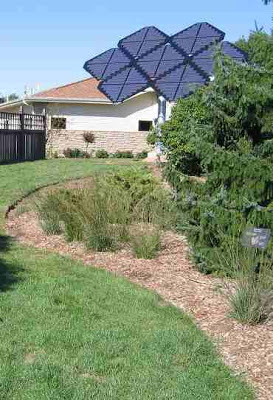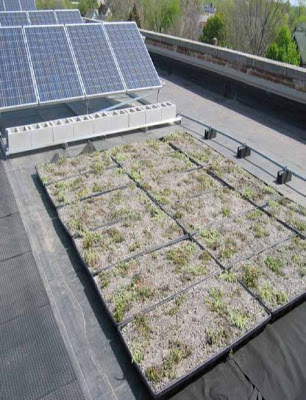WYANDOTTE — The sun was shining brightly on the day the city and school district kicked off their first-ever solar energy project.
It was just as fitting that officials chose Earth Day to highlight the installation of a 10-kilowatt photovoltaic system on the roof of Wilson Middle School.
Melanie McCoy, general manager of Wyandotte Municipal Services, said her department received a $50,000 Michigan Energy Office matching grant earlier this year for the design, installation, operation and maintenance of the renewable energy system.
She said Wyandotte Municipal Services was pleasantly surprised by an offer from Johnson Controls, a Milwaukee-based company working with the district to integrate the project into the school’s curriculum.
“Wyandotte Municipal planned on spending 50 percent of the cost of the grant, but Johnson Controls picked up a substantial amount of it,” McCoy said.
Photovoltaics, or PV as it is sometimes referred to in the industry, is a technology in which light is converted into electrical power. In such a system, photons from sunlight knock electrons into a higher state of energy, creating electricity.
Such a system rarely generates enough power to fill the needs of a building the size of Wilson Middle School, but it can be used to supplement coal burning and natural gas.
The Wyandotte Municipal Service Commission awarded installation of the system to Kulick Enterprises Inc. of Wyandotte.
This hybrid energy conservation system will be a learning tool both for the energy providers at Wyandotte Municipal Services and students at the school.
The first 12 months will offer a learning curve that should provide data for future years, indicating how much the system can offset energy costs.
“For the first year, we are leasing the roof for $1 so we can get an idea how much energy it produces,” McCoy said. “We can then share the savings down the road so we can all benefit from it.”
She envisions the city-owned Wyandotte Municipal Services and the school district entering a financial agreement after the first year of the solar PV system’s operation.
McCoy speculates that the reason solar energy isn’t used more extensively is because of the start-up costs and the time it takes to recoup those costs.
Because of that, McCoy said solar power is expensive on a per-kilowatt scale.
“Coal is 5 to 7 cents per kilowatt, wind (power) is 10 cents a kilowatt and solar is 23 cents a kilowatt,” McCoy said. “This system cost $100,000 and we think it’s going to be $2,000 per year (in energy savings). If we were paying this ourselves, it would take 50 years until we regained our investment.”
McCoy said silicon in the solar panels is a major component that makes them so expensive. She said panels made without silicon would make them considerably less expensive.
However, in this case the state grant and financial support from Johnson Controls have made the system extremely affordable.



